
Typhoid fever, also known as typhoid, is a disease caused by Salmonella serotype Typhi bacteria. Symptoms vary from mild to severe, and usually begin six to 30 days after exposure. Often there is a gradual onset of a high fever over several days. This is commonly accompanied by weakness, abdominal pain, constipation, headaches, and mild vomiting. Some people develop a skin rash with rose colored spots. In severe cases, people may experience confusion. Without treatment, symptoms may last weeks or months. Diarrhea may be severe, but is uncommon. Other people may carry it without being affected, but are still contagious. Typhoid fever is a type of enteric fever, along with paratyphoid fever. S. enterica Typhi is believed to infect and replicate only within humans.

Epidemic typhus, also known as louse-borne typhus, is a form of typhus so named because the disease often causes epidemics following wars and natural disasters where civil life is disrupted. Epidemic typhus is spread to people through contact with infected body lice, in contrast to endemic typhus which is usually transmitted by fleas.
Trench fever is a moderately serious disease transmitted by body lice. It infected armies in Flanders, France, Poland, Galicia, Italy, Macedonia, Mesopotamia, Russia and Egypt in World War I. Three noted cases during WWI were the authors J. R. R. Tolkien, A. A. Milne, and C. S. Lewis. From 1915 to 1918 between one-fifth and one-third of all British troops reported ill had trench fever while about one-fifth of ill German and Austrian troops had the disease. The disease persists among the homeless. Outbreaks have been documented, for example, in Seattle and Baltimore in the United States among injection drug users and in Marseille, France, and Burundi.

Hans Zinsser was an American physician, bacteriologist, and prolific author. The author of over 200 books and medical articles, he was also a published poet. Some of his verses were published in The Atlantic Monthly. His 1940 publication, As I Remember Him: the Biography of R.S., won one of the early National Book Awards, the sixth and last annual award for Nonfiction voted by members of the American Booksellers Association.
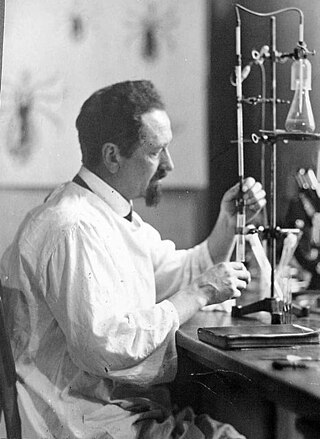
Rudolf Stefan Jan Weigl was a Polish biologist, physician and inventor, known for creating the first effective vaccine against epidemic typhus. He was nominated for the Nobel Prize in Medicine each year between 1930 and 1934, and from 1936 to 1939.
Relapsing fever is a vector-borne disease caused by infection with certain bacteria in the genus Borrelia, which is transmitted through the bites of lice or soft-bodied ticks.
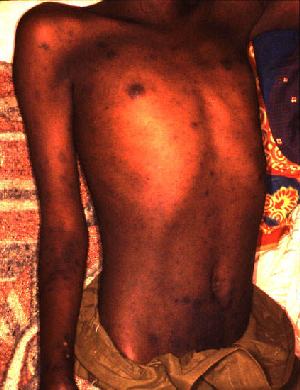
Typhus, also known as typhus fever, is a group of infectious diseases that include epidemic typhus, scrub typhus, and murine typhus. Common symptoms include fever, headache, and a rash. Typically these begin one to two weeks after exposure.

John Laing Leal was an American physician and water treatment expert who, in 1908, was responsible for conceiving and implementing the first disinfection of a U.S. drinking water supply using chlorine. He was one of the principal expert witnesses at two trials which examined the quality of the water supply in Jersey City, New Jersey, and which evaluated the safety and utility of chlorine for production of "pure and wholesome" drinking water. The second trial verdict approved the use of chlorine to disinfect drinking water which led to an explosion of its use in water supplies across the U.S.
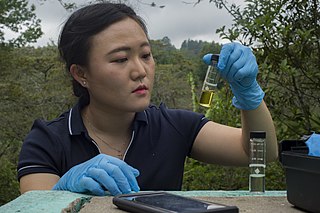
Water chlorination is the process of adding chlorine or chlorine compounds such as sodium hypochlorite to water. This method is used to kill bacteria, viruses and other microbes in water. In particular, chlorination is used to prevent the spread of waterborne diseases such as cholera, dysentery, and typhoid.

Louisa Jordan was a Scottish nurse who died in service during the First World War.

Hélène Sparrow, was a Polish medical doctor and bacteriologist. She is best known for her work on the control of many epidemics including: typhoid fever, cholera, dysentery, and smallpox. Throughout the 1920s, Sparrow worked with the Polish Armed Forces at the State Institute of Hygiene in Warsaw. While at the State Institute of Hygiene, she worked vigilantly to produce the first vaccine against typhus and ran several large-scale vaccination campaigns to control the spread of diphtheria and scarlet fever all along the eastern frontiers of Poland. In 1933, Sparrow began to study flea-borne and louse-borne rickettsia diseases in Tunis, where she became the head of her own department at the Pasteur Institute. In her later years, she expanded her studies to include Mexico and Guatemala. While in Mexico and Guatemala, Sparrow developed a protective vaccine against typhus. She contributed a great amount of research to the World Health Organization on relapsing fever specifically in Ethiopia.
The Infectious Disease (Notification) Act first appeared on the UK national statute books in 1889. It was compulsory in London and optional in the rest of the country. It later became a mandatory law with the Infectious Disease (Notification) Extension Act 1899. These acts required householders and/or general practitioners to report cases of infectious disease to the local sanitary authority. The following diseases were covered by the acts: smallpox, cholera, diphtheria, membranous croup. erysipelas, scarlatina or scarlet fever, typhus fever, typhoid fever, enteric fever, relapsing fever, continued fever and puerperal fever. Householders or general practitioners who failed to notify a case of one of these diseases was liable to a fine of up to forty shillings.

William Hunter CB FRSE was a British surgeon known primarily for his theories on oral sepsis, one of the inspirations for the Henry Cotton theory of focal sepsis which led to the increased number of tooth extractions and tonsillectomies in the 1910s and 20s. By the 1930s, this view had fallen out of favor, but not until after thousands of surgeries had been performed.
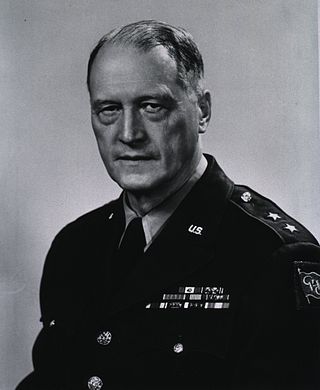
Edgar Erskine Hume CBE FRSE MD was an American physician, Major General in the U.S. Army medical corps, writer and amateur ornithologist. At the time of his retirement from the Army he was the most decorated medical officer in American history.
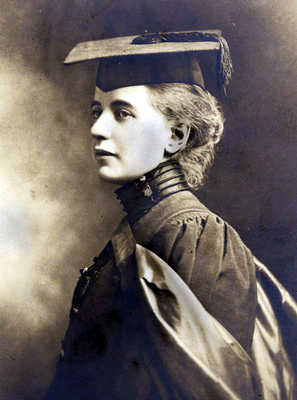
Elizabeth Ness MacBean Ross was a Scottish physician who worked in Persia among the Bakhtiari people. With training and a post-graduate qualification in tropical medicine, she responded to an appeal for doctors by the Serbian government in 1915 and treated Serbian casualties, most of whom were victims of typhus. Ross's life and work is commemorated by a plaque in her home town of Tain and her death anniversary is commemorated by ceremonies in Serbia, on 14 February.

Melville Douglas Mackenzie was a British physician and epidemiologist who worked in the health section of the League of Nations and in many countries pioneering international health collaboration. After World War II, he had a prominent role in founding the World Health Organization (WHO), including the drafting of its constitution.
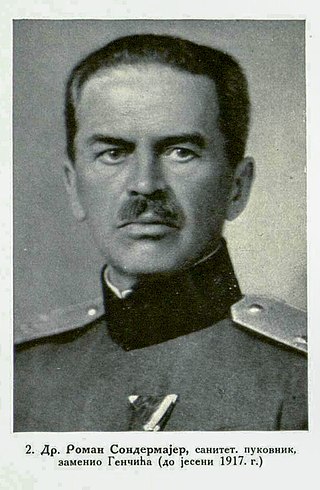
Colonel Dr. Roman Sondermajer CMG was a Royal Serbian Army physician who served as Chief Surgeon of the Royal Serbian Army, Chief Surgeon and Director of the Military Hospital and Chief of the Medical Staff of the Serbian Supreme Command during World War I.
In the early stages of the First World War, Serbia suffered an epidemic of typhus and relapsing fever. The epidemic first appeared in the late autumn of 1914, after the second Austrian offensive. By December the Austro-Hungarian troops were pushed out of Serbia for the second time in ten days. Around 50,000 wounded and sick remained in hospitals. Great problems with the lack of accommodation and food were affecting not only hospitals but the civilian population as well, besides that, there were around 50,000 Austro-Hungarian prisoners that had to be accommodated and fed too. Dr. Roman Sondermajer established a large field hospital near Kragujevac, using army barracks to care for the sick and wounded.

Eleanor Soltau (1877–1962) was an English doctor who led the first unit of the Scottish Women's Hospitals for Foreign Service in Serbia.
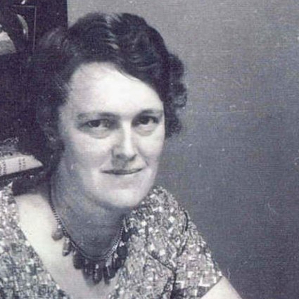
Joan Forrest Gardner was an Australian microbiologist who had an extensive career researching and teaching in the areas of disinfection, infection control, and sterilisation.

















